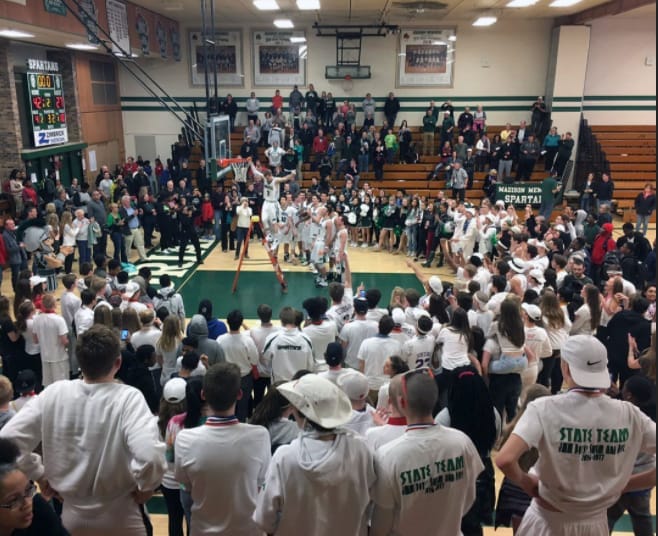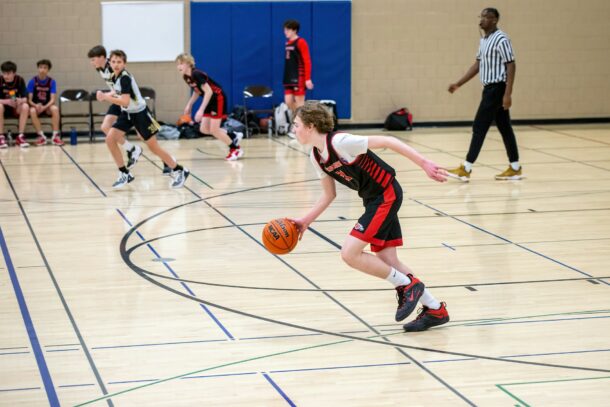Teaching your bigs to run the floor with purpose is critical in today’s fast-paced game. One of the best ways to build those habits is by implementing a transition post drill that focuses on movement, timing, and scoring on the move. If your post players are standing still and waiting for the ball, you’re missing a big opportunity.
This drill not only improves their ability to catch while moving but also reinforces essential passing angles, court awareness, and post positioning. For new and inexperienced youth basketball coaches, this is a great starting point for building confident, mobile post players.
Why the Transition Post Drill Matters
Youth basketball often emphasizes guard play, but the development of bigs can’t be overlooked. The transition post drill gives post players opportunities to move in space, catch the ball in stride, and create scoring chances in game-like situations. In addition, it teaches guards to look ahead and feed the post effectively.
Too often, young players only practice stationary post moves. However, this drill mimics real transition opportunities where timing and movement matter. Even better, it keeps your bigs active and engaged, no more standing around in the paint waiting for a guard to decide what to do.
How to Set Up the Transition Post Drill
Follow these steps to create a productive drill environment:
- Two lines: One at half court and one on the opposite wing.
- Glass pass: A big starts under the basket and tosses the ball off the backboard.
- Sprint and zigzag: A second big (or guard) zigzags through cones toward the wing.
- Deliver the pass: That player feeds the big in stride on the block.
- Add pressure: Use a coach or teammate with a pad to simulate contact.
This drill works best when players understand spacing. Make sure your post players are aiming to catch the ball above the hash mark, not buried under the basket where they have no angle to finish or pivot.
Key Coaching Points for Success
- Catch on the move: Your post player should be catching while running, not standing. This builds comfort finishing in transition.
- Pass from an angle: Guards should get wide enough on the wing to deliver a clean, direct pass into the post.
- Sprint with purpose: Movement must be game speed to reinforce real transition habits.
- Post above the hash: Use the hash mark as a teaching cue. This improves footwork, passing angles, and scoring options.
- Vision up court: Guards must develop the habit of lifting their eyes and delivering early passes.
By reinforcing these details each rep, your players will start to internalize the rhythm of transition offense. As a result, they’ll play faster and with more confidence.
Join the TeachHoops Community

TeachHoops.com offers a unique platform for coaches to share experiences and gain new insights. Learn from others who have navigated similar challenges. It’s an invaluable resource for those looking to:
- Broaden perspectives
- Refine strategies
- Enhance their leadership and motivational skills
Step into Enhanced Coaching
Win the Season: Basketball Masterclass!

Adjustments to Challenge Players
As your team progresses, it’s smart to increase the complexity of the transition post drill. Here are a few ideas:
- Add more cones: This forces guards to control the ball through traffic before making the entry pass.
- Include a coach with a pad: This simulates real post contact and helps build finishing toughness.
- Make moves position-specific: Require different post finishes based on footwork or game scenarios.
- Go both directions: Run the drill in both directions to develop left and right-hand comfort.
Additionally, make sure your team is practicing proper spacing during the entire sequence. While the drill emphasizes the post, it also improves guard skills and transition spacing.
Final Thoughts on the Transition Post Drill
This transition post drill is about more than just getting your bigs layup reps. It builds timing, decision-making, and physicality in a way that reflects real games. When done right, your team will run more fluid offense, make smarter passes, and get higher percentage shots.
For youth basketball coaches just starting out, drills like this help form the foundation of a well-rounded team. It encourages teamwork, pace, and awareness, and those are the building blocks of winning basketball.
Keep your bigs moving. Teach your guards to read. And most importantly, create an environment where learning through game-like drills leads to confident, effective players.
Latest Posts
- How AI Coaching Prompts Can Transform Your Youth Basketball Program
- AI-Backed Basketball Coaching Strategies: Why Coaches and Players Should Adopt ‘The Coaching Habit’
- AI Tools for Basketball Coaches: Saving Time and Improving Your Program
- Complete Offseason Basketball Workout for Youth Players
- The Best Youth Basketball Passing Drills Every Coach Should Know





